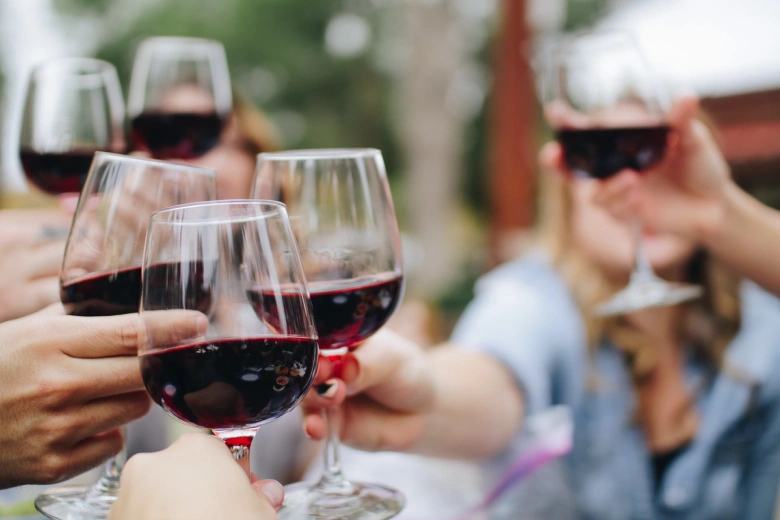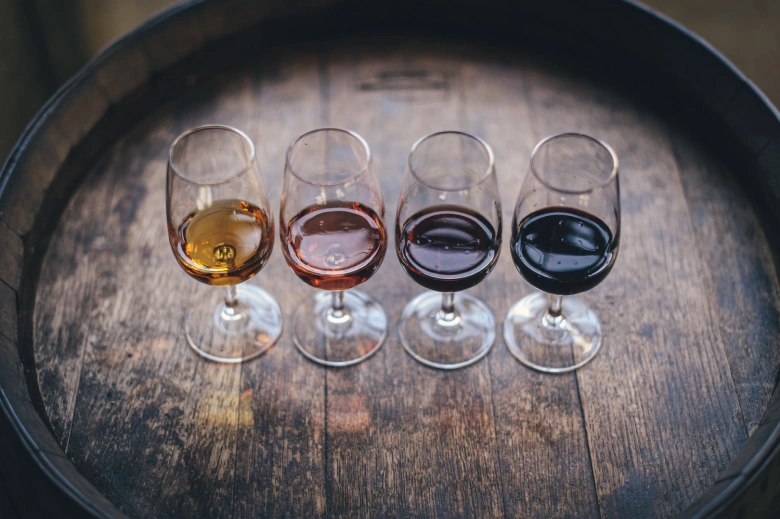Dozens of wines in one day? If you’re thinking about wine tasting to get good and drunk, you’re mistaken. A wine tasting is not about drinking; it’s about savoring every layer of aroma and flavor in the drink you’ll be sampling. The practice is about assessing and judging the wine from the winery you’re touring or visiting.
Contrary to a popular notion, sommeliers and connoisseurs of vino are not the only people who can enjoy a wine tasting. Even the average drinker or wine enthusiast has the ability to sip and spit — and figure out the profiles, much like an expert. You only need to have full use of your senses: smell and taste. If both are particularly heightened than the average person, you may even master wine tasting.
But first, how do you do wine tasting? You learn about the four S’s.
What are the 4 S’s of wine tasting?
The four S’s describe the entire process of the tasting, from beginning to the end.
See
Assess the wine by sight. Look at it from the straight angle first by putting up against a light. Tilt it to the edge to see its color range. Look for depth of color by looking down at it, which gives you its saturation and density. For the sommelier and masters of tasting wine, the saturation and density reveal the grape variety.
After seeing the win from a straight angle and tilting the glass, look at it from the side. A side view shows clarity; if the wine is clear and exhibits a bit of sparkle, it’s usually a good drink.
Swirl
Swirl the wine to release the bouquet, preparing you to do the next step. The motion also allows you to determine if the wine has more alcohol content. If the wine creates “tears” down the side of the glass, it indicates a bolder, denser wine.

Smell
It’s not necessary to put your entire nose in the glass. Over the top nose is fine, and you can already get a good whiff. Take quick, short whiffs and get a sense for the fruit aromas, herbs and spices, flowers and leaves and vegetables. Sniff also the barrel; most wines aged in oak barrels smell of espresso, chocolate, caramel, roasted nuts or vanilla.
Most wine tasters also pick up the flaws at first whiff. Wine flaws include undesirable scents that have no business being in wines, like ethyl acetate (smells like nail polish) and vinegar, which indicates volatile acidity.
Swallow
And then you taste, which means a sip not a gulp. Masters and sommeliers usually suck in the wine, as though pulling from a straw because it aerates the drink. It allows the taster a greater idea of the flavors and aromas.
Your taste buds should recognize a balance: sour, sweet, salty and bitter. The wine you’re tasting should also feature complexity and harmony.
What about other wine tastings where the people spit into individual buckets or communal spittoons?
Wine Tasting Etiquette 101
To spit or not to spit — that is the question most new wine tasting attendees think about. You’ve a few ways to approach this dilemma:
- If you’re driving back, spit
- If you’re limiting alcohol consumption or just want to sample several varietals, spit
- If you can handle drinking several glasses of different wines, swallow
- If the wine tasting room is intimate with more people than you’re comfortable with, swallow
- If it’s a large outdoor tasting event and you want to sample all the wines, spit
Both, however, will require some delicacy. When spitting, make sure to do it with enough force but not too much that you end up “splashing” someone. When swallowing, try not to turn the wine into beer because it’s meant to be savored with a sip.
Other acceptable forms of behavior at any wine tasting event, small and large:
- Don’t wear perfume because it affects the experience for other people around you
- Don’t feel the need to note every detail of the wine; good wineries welcome all levels of expertise
- When pouring the wine yourself, just pour a small portion; never fill to the brim
- Wine tasting rooms are not bars, so pace yourself
- Listen to the host talk about the wine first, learn about what you’re drinking and then sip
- Tip the wine tasting room employees; if you didn’t buy a bottle, tip more
Although typically considered a sophisticated event, wine tastings do not have to be stiff. Have fun, be sociable and learn as much as you can about every pour.

